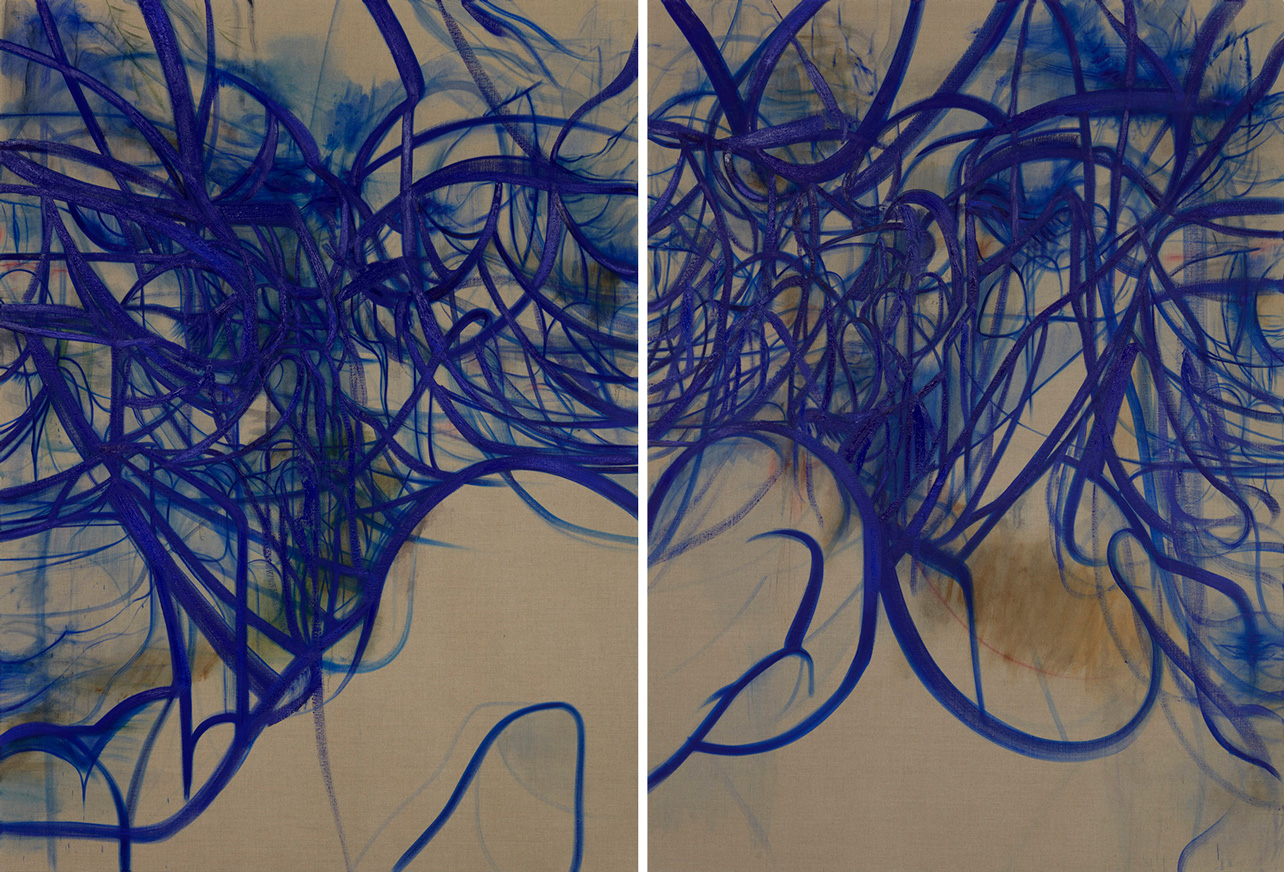ART-PRESENTATION: Nigel Cooke-Oceans
 Nigel Cooke is known for his evocative paintings which blend personal memories with art historical influences, classical themes with abstract interpretations of the natural world. Executed with a masterful array of techniques and applications of paint, these atmospheric and often epic compositions weave figures and environments together, reflecting a complex interplay of memory, chance, and intuition.
Nigel Cooke is known for his evocative paintings which blend personal memories with art historical influences, classical themes with abstract interpretations of the natural world. Executed with a masterful array of techniques and applications of paint, these atmospheric and often epic compositions weave figures and environments together, reflecting a complex interplay of memory, chance, and intuition.
By Efi Michalarou
Photo: Pace Gallery Archive
The paintings featured in Nigel Cooke’s solo exhibition “Oceans” display a significant stylistic shift in the artist’s oeuvre, with a more performative and kinetic approach to gesture. These new works, all executed in tones of blue, are at once meditations on the sea and responses to characters in Homer’s “Odyssey”. Not only is the ocean central to Homer’s story, as it tests the characters and brings them together, but also to the artist’s weekly studio routine. Regular sea swimming has informed the energy of these paintings, both physically and psychologically, whilst at the same time prompting thoughts on Homeric characters Telemachus, Athena, Calypso, and Odysseus. Furthering the radical advancements in his practice, Cooke executed the paintings on raw canvas. The natural linen endows the paintings with a unique brownish ground and a textured weave vibrantly contrasting the hues of blue hereby spotlighting the energy of the water. This material quality also impacts his mark-making as washes develop into thickets of dark staining. With this exhibition, Cooke pushes the boundaries of painting and explores the interdependency between absence and presence, the mind and the natural world, thereby creating a body of work that is rhythmic and living, poetic and vigorous.
Nigel Cooke was born in Manchester, United Kingdom, in 1973. He began studying art at Stockport College, and then continued his work at Nottingham Trent University, receiving a BA in Fine Art in 1994, and later attended the Royal College of Art, London, where he received an MA in painting in 1997. While living in Essex after receiving his MA, he became acquainted with artists Jake and Dinos Chapman, who gave him his first solo exhibition at Chapman Fine Arts Gallery, London (2000). He later earned a Ph.D. in Fine Art from Goldsmiths College, London (2004), where he wrote a thesis on the “death of painting”—the recurring 20th Century idea that painting, under the weight of technological modernity and its own accumulated history, had lost the ability to effectively signify or to communicate to contemporary audiences. Cooke’s work has primarily centered on meticulously painted, large-scale urban landscapes, which he calls “hybrid theatrical spaces.” Employing disparate styles and often integrating trompe l’oeil depictions of miniature rocks and trees with backdrops of decaying, graffiti-marked buildings, Cooke creates environments that tend to convey obscure and macabre narratives. In “Ghost on the Happy Trail” (2003), cartoon brains and schematic birds traipse across empty lots studded with jack-o’-lanterns and buried human heads. In “The Artist’s Garden” (2006), the hyperreal detail present in other works gives way to an ultimately flat rendering of penciled forms against a gold backdrop. The work combines Byzantine stylistic elements with the ubiquitous flatness of mid-century modern painting in an indirect acknowledgment that the flatness associated with the death of painting is not a modern or new convention. More recent works, such as “Experience” (2009), depict scenes of lone artists endowed with beards generally associated with ancient philosophers, in slightly menacing, yet weary poses. As in his past landscapes, in these works Cooke continues to focus on concepts of creative exhaustion. Over time, Nigel Cooke’s formerly tightly detailed landscapes have become more diffuse, not only verging towards abstraction, but also losing their intricate detail. His most recent work is entirely abstract, composed of single colours painted in dense, gestural brushstrokes on raw linen canvasses. They explore the endless potential of the line as a means of expression. He cites artists such as Willem de Kooning and Francis Bacon, as well as Spanish painting and Chinese silk painting as influences. In 2014, Nigel Cooke became represented by Pace.
Photo: Left: Nigel Cooke, Telemachus, 2020, oil and acrylic on linen, 225 cm × 164 cm, © Nigel Cooke, Courtesy the artist and Pace Gallery. Right: Nigel Cooke, Athena, 2020, oil and acrylic on linen, 225 cm × 164 cm, © Nigel Cooke, Courtesy the artist and Pace Gallery
Info: Pace Gallery, Quai des Bergues 15-17, Geneva, Duration: 11/11/2020-14/1/2021, Days & Hours: Mon-Sat by appointment (book your visit), www.pacegallery.com



